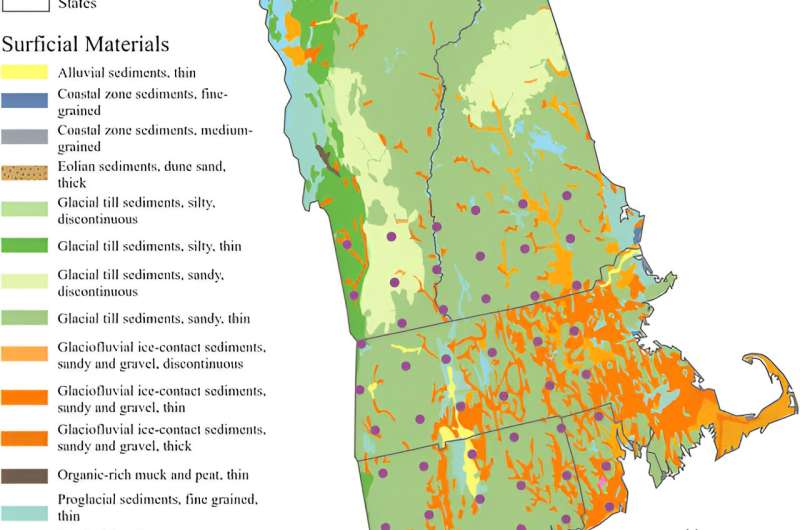This article has been reviewed according to Science X's editorial process and policies. Editors have highlighted the following attributes while ensuring the content's credibility:
fact-checked
proofread
Spectral measurements capable of estimating nutrient content of forest tree leaves

The general health of forests can be estimated by the micro- and macronutrient content of tree leaves to help inform forest management decisions in light of climate change, species loss and other variables. Traditional methods of assessing nutrient levels in forests are expensive and labor-intensive.
Researchers recently analyzed the reflected spectra from tree foliage to accurately estimate the nutrients of leaves, offering a faster, larger-scale method of assessing forest health.
Field methods of collecting leaf samples and then measuring foliage nutrient content in the lab are time-consuming. New, faster methods are required to estimate forest health as climate change alters growing conditions.
To address this issue, a team of researchers from the University of Massachusetts and the University of Virginia analyzed reflected light (spectra) across a wide range of wavelengths from forest foliage to accurately determine the concentrations of calcium (Ca), magnesium (Mg), potassium (K), phosphorus (P), manganese (Mn), and zinc (Zn) in leaves.
The team published the study on June 27 in the Journal of Remote Sensing.
Specifically, the researchers measured reflected light at wavelengths from 400 to 2,450 nanometers (nm, 1.0 x 10-9 m) to assess nutrient concentrations. The team was able to identify the best wavelengths to measure each nutrient analyzed through a partial least squares regression (PLSR). PLSR is especially well-suited to managing highly correlated independent variables, like the individual reflectence over a continuous spectrum.
"The developed PLSR model predicted plant nutrients with moderate to strong accuracy for macro- and micronutrients in temperate hardwood forests of the Northeastern United States. Spectral measurements combined with wavelength selection and PLSR models can be used to quantify foliar macro- and micronutrients at regional scales and can be further improved by incorporating site geologic materials and tree genera," said Qian Yu, associate professor in Earth, Geographic, and Climate Sciences at the University of Massachusetts-Amherst and the corresponding author of the research paper.
The researchers realized that their ability to accurately use spectra to determine the nutrient level of tree foliage could be significantly improved by considering the soil type in which the trees grew in. Notably, this variable is often overlooked when assessing the nutrient composition of tree leaves.
The team measured the foliage nutrients Ca and P of trees in four types of soil: coarse glacial till, glaciofluvial, melt-out till and outwash. By accounting for soil type, researchers improved their PLSR nutrient analysis accuracy from R2 = 0.66 to R2 = 0.87 (an R2, or coefficient of determination, that equals 1.0 indicates that all variation observed is due to differences in the independent variable, or spectral measurements).
Different soils had greater and lesser effects on Ca and P. Soil had little effect on Ca concentrations, for example, but tended to affect P to a greater degree. Outwash soil also provided the most accurate predictions for both Ca and P nutrients. Critically, Ca is a limiting nutrient in forests that plays important roles in plant structure, chemical signaling and as an enzyme cofactor that changes enzyme efficiency.
The genus of the trees additionally affected the accuracy of foliage nutrient concentration predictions. In fact, analyzing spectral data based on tree genera improved the accuracy of nutrient predictions even better than soil composition. Tree genus improved Ca prediction accuracy from R2 = 0.66 to as high as R2 = 0.91 and R2 = 0.93 for Fagus (Beech) and Quercus (Oak) genera, respectively. The team analyzed spectral data for Acer (Maple) and Betula (Birch) genera as well.
The research team suggests that specific tree genera likely influence foliage nutrients because the physiological mechanisms responsible for nutrient acquisition and transport are genetically controlled and unique to each genus. Additionally, some tree genera may require individual nutrients more than other genera that may be more adapted to a particular soil, resulting in differences in nutrient uptake.
Ultimately, the research team is hopeful that their new spectral assessment technique will be successfully applied to other hardwood forests to inform important forest management decisions.
"The method introduced in this paper holds promise for large-scale plant nutrient assessment and can decrease the costs of traditional, field-based approaches," said Wenxiu Teng, Ph.D. candidate in Earth, Geographic, and Climate Sciences at the University of Massachusetts-Amherst and first author of the paper.
More information: Wenxiu Teng et al, Predicting Foliar Nutrient Concentrations across Geologic Materials and Tree Genera in the Northeastern United States Using Spectral Reflectance and Partial Least Squares Regression Models, Journal of Remote Sensing (2024). DOI: 10.34133/remotesensing.0093
Provided by Journal of Remote Sensing



















